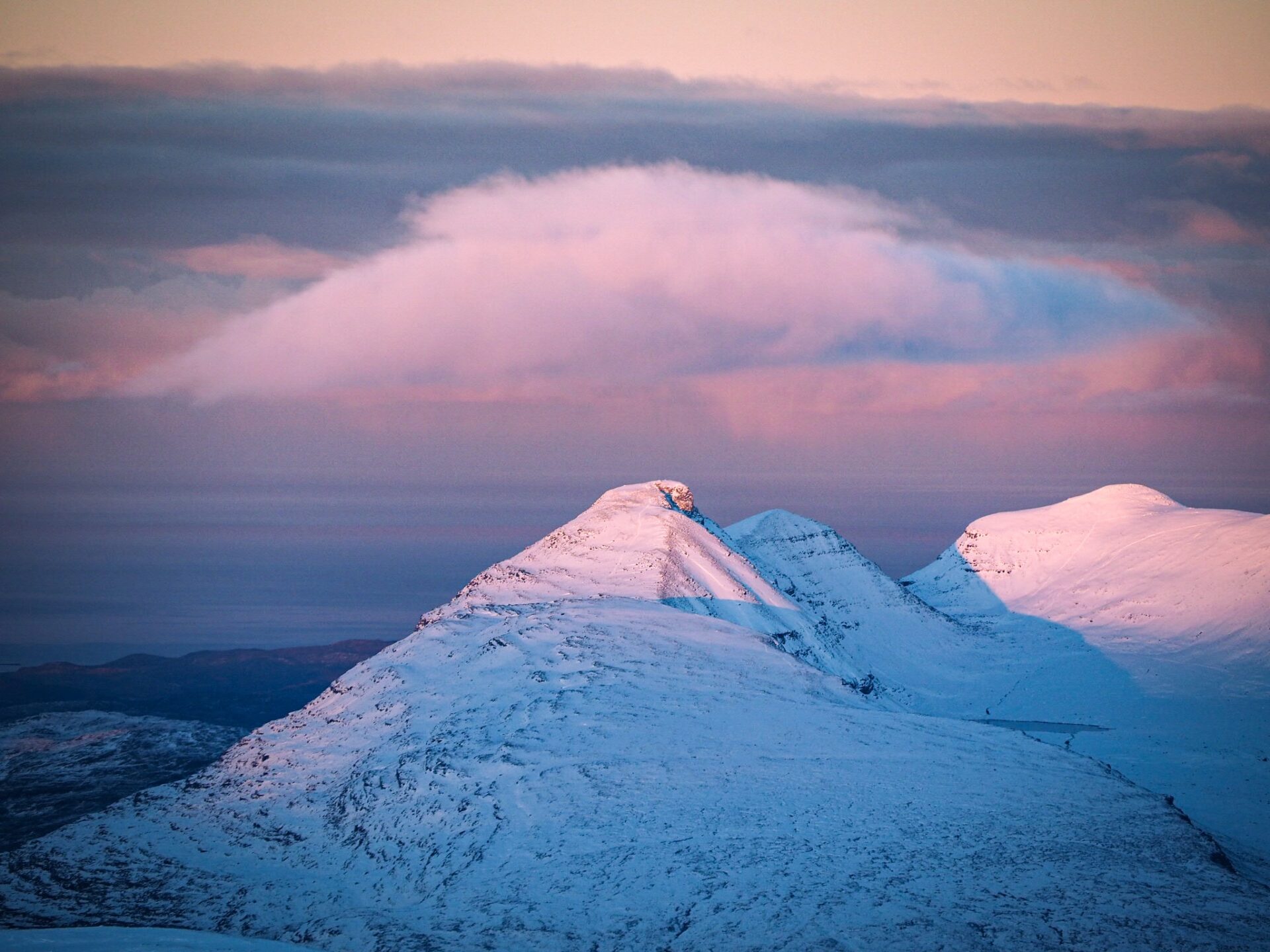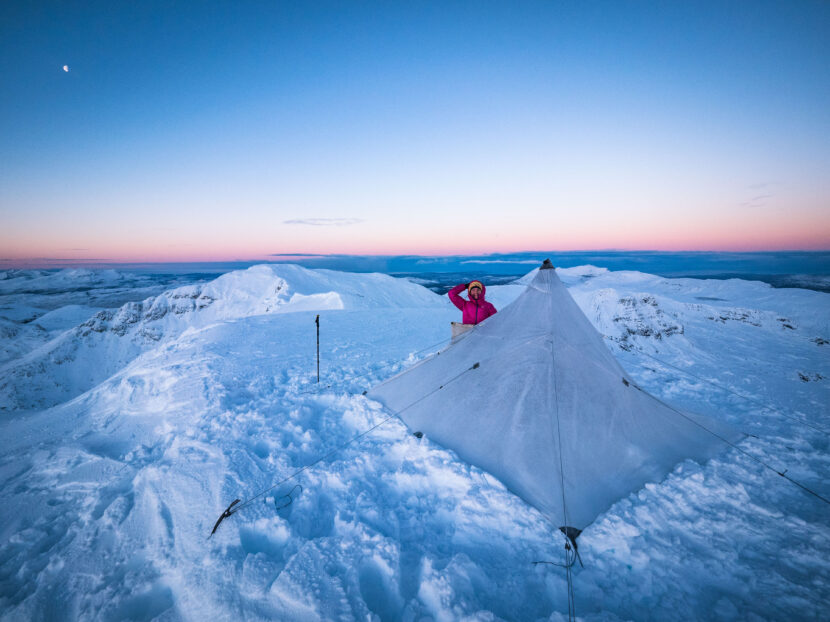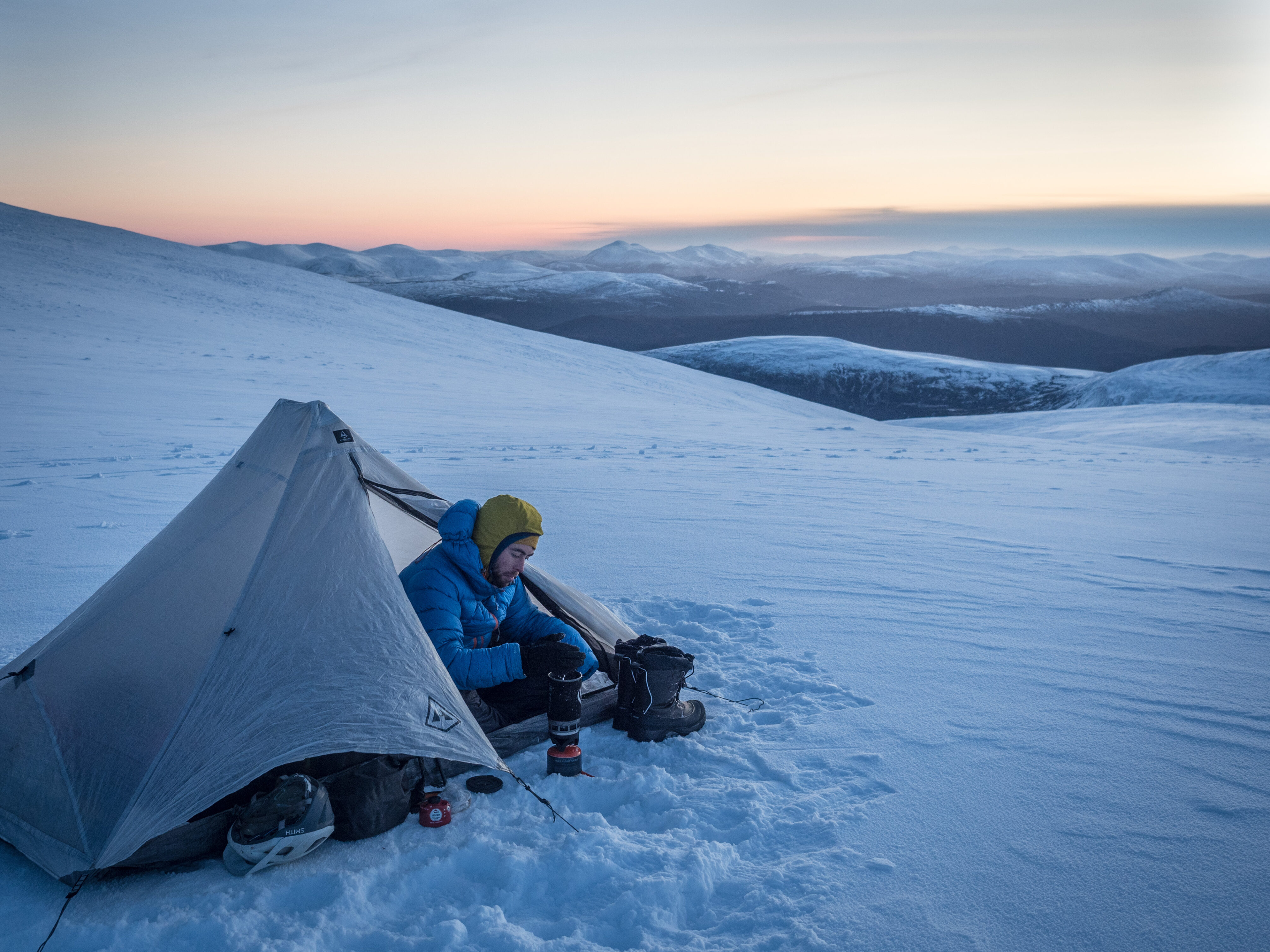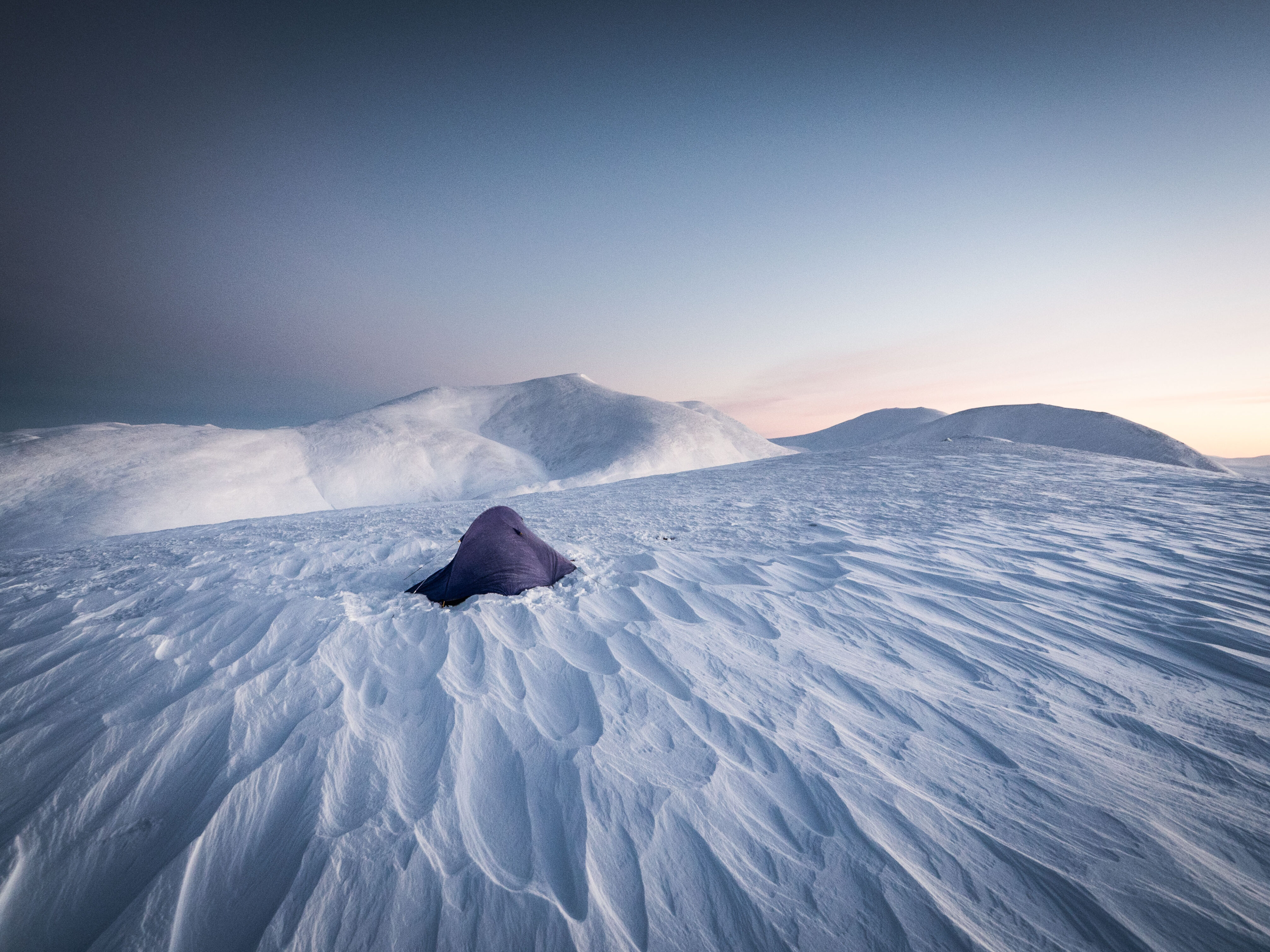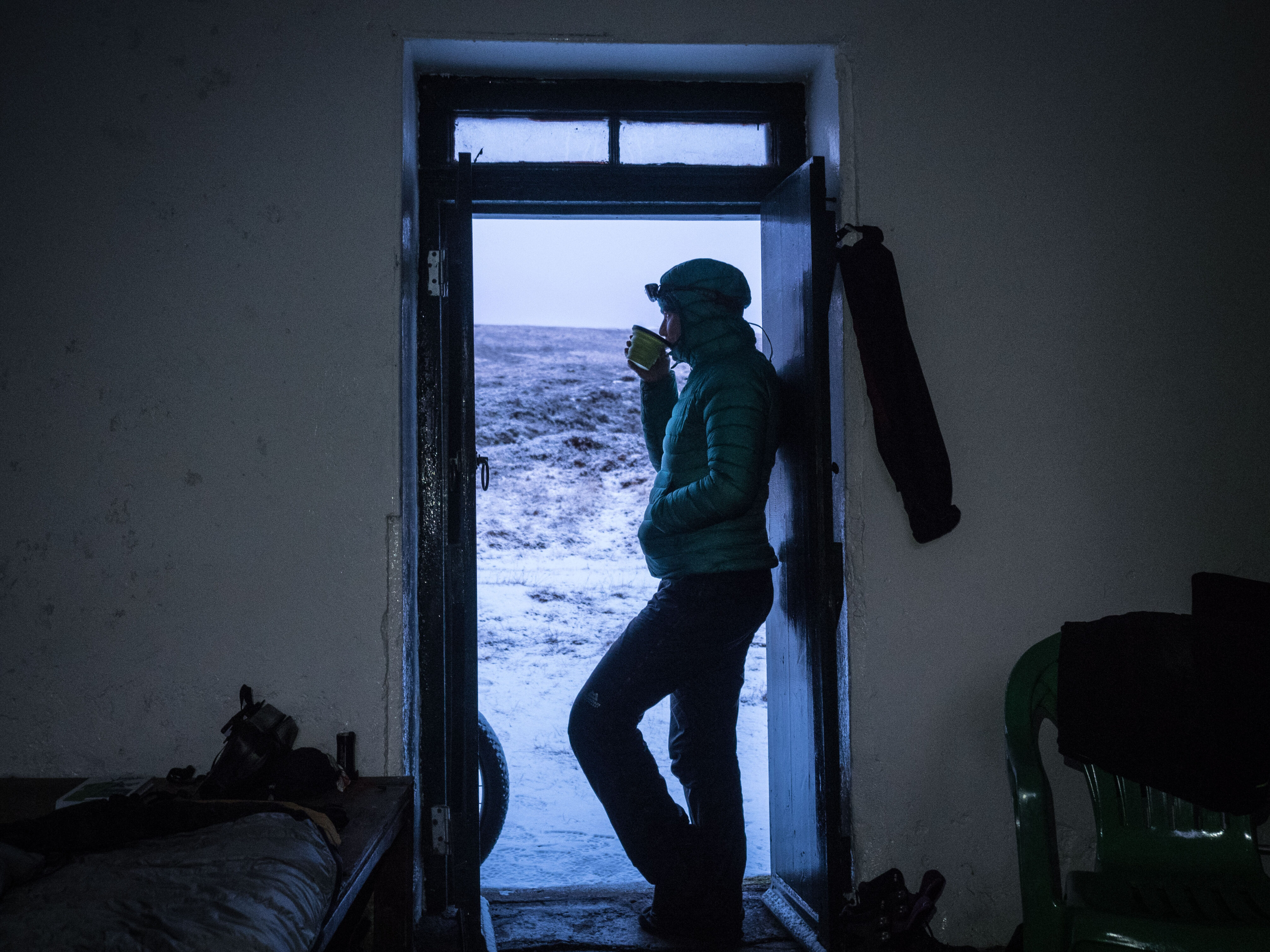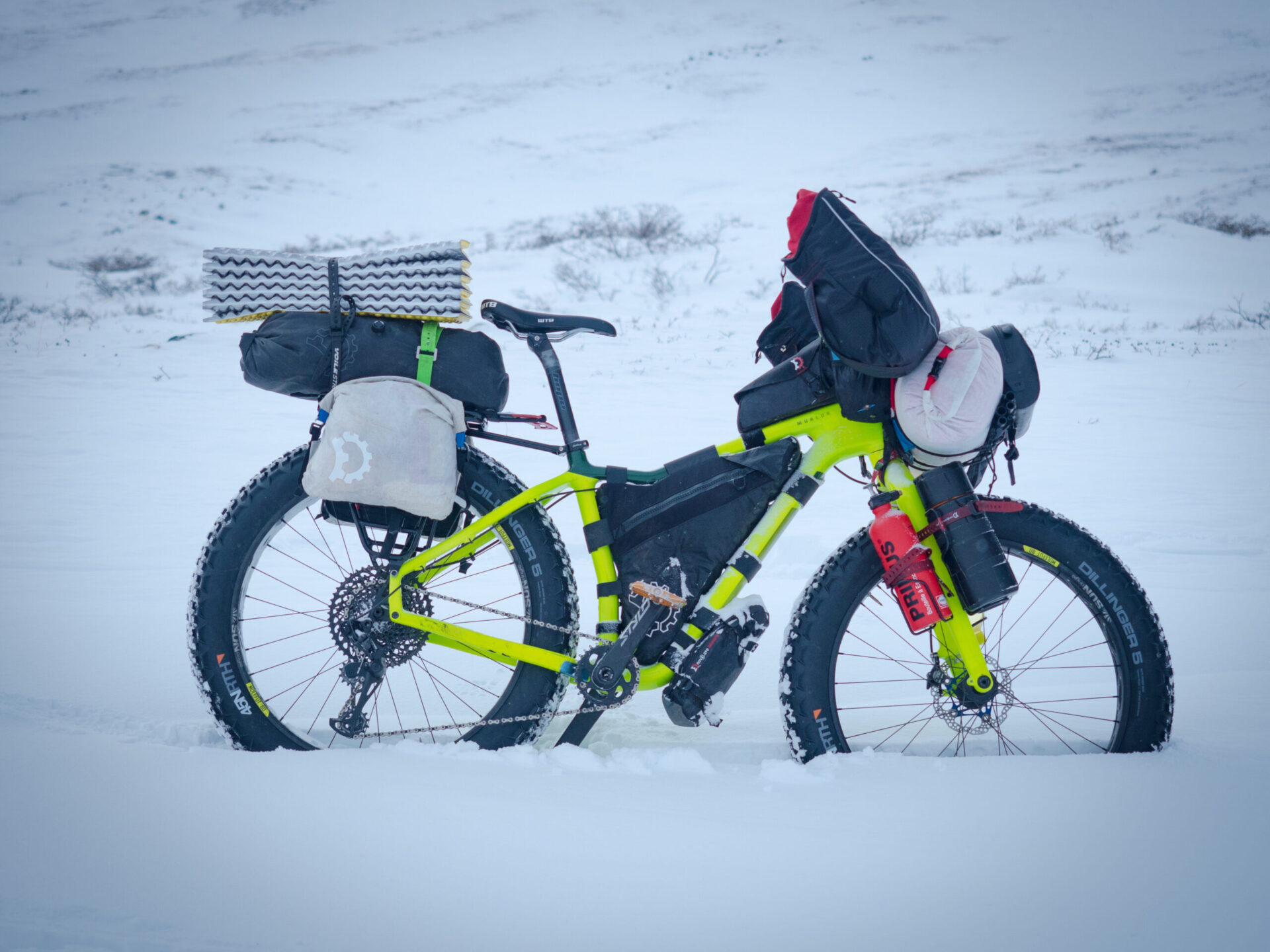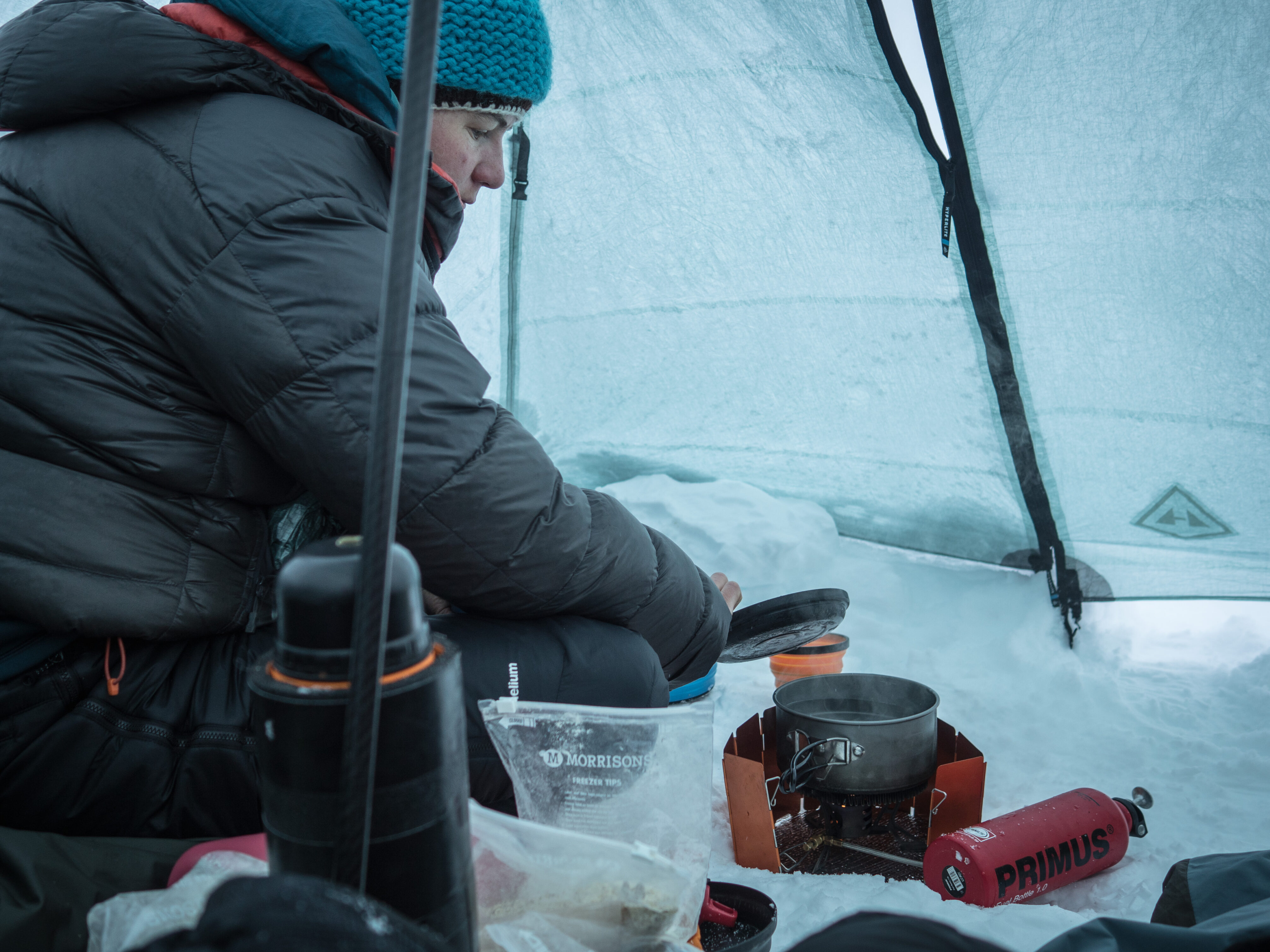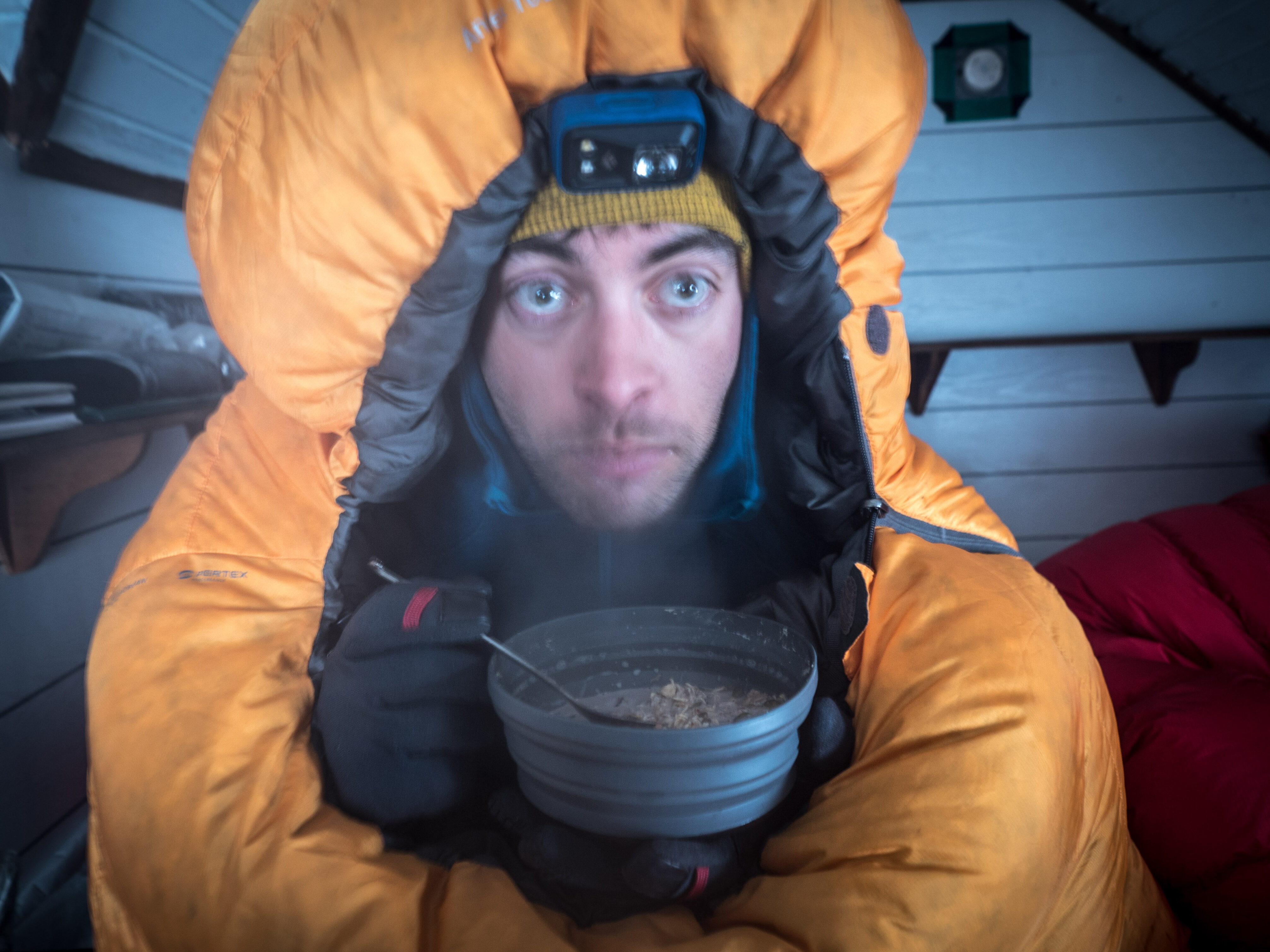Camping in winter: is it just a load of faff for a night of freezing your bum off, or can it actually be a fun experience? Ah come on, of course you know the answer to that one! Winter camping does add some extra challenges compared to the summer months, but overcoming them is more than worth the effort, we promise. Winter nights out are by far some of the most memorable experiences that we’ve had in Scotland. You don’t need us to tell you that snow on the ground and a sharp frost in the air adds a little bit of magic to a winter’s night. One of our favourites is watching the sun rise slowly over the hills from your sleeping bag — no 4am alarm calls to catch the dawn like at midsummer!
But about those extra challenges. Going unprepared in the colder months can easily lead to a ‘bracing’ experience, and it’s fair enough that the prospect can be daunting enough to keep folks at home under the duvet. However, we believe that everyone is capable of experiencing adventures and expanding their minds in the hills and in the forest. All you need is the right knowledge, gear and a willingness to embrace the ‘learning zone’. A hand to guide you doesn’t hurt either — that’s where we come in. the BC team have had our fair share of learning experiences, so in the first of our new series of blog posts we’re going to look at the things we wish we’d known earlier about winter camping in Scotland. Read on for a look at gear, tactics and mindset that help us spend more than just the daylight hours outside when we do get a visit from Old Man Winter…
Home is where you pitch it
Home is where you pitch it
The first step to staying comfortable when camping in winter is making sure that your shelter is up to the job. Weather in the mountains is likely to be more severe in winter, so before you think about changing your gear you might simply want to plan your route with low-level camping and guaranteed shelter.
When you pitch it, the lower temperatures of winter will likely lead to more condensation on the inside of your tent. Perhaps from your own breath or from heating water for drinks and food. No matter what the manufacturer says about it, on a still night in the inner surface will be soaking by morning, and this can easily be transferred on to you or your sleeping bag. Wet gear is cold gear! Because of that, a roomier tent makes life considerable easier in winter. It’s perhaps not the time to squeeze two of you into a ‘1-man’ tent like you might in summer. You might even take a 2-man tent on a solo mission if you have the means to pack it. the long nights pass a lot more pleasantly with a little extra wriggle room.
Bivvy bags remain popular for reasons that I just can’t fathom, since they do little to shelter you from the weather while making sure that the condensation (there will be condensation) is kept right next to your sleeping bag.
One way of cutting weight in winter is to use just the outer skin of a double-walled tent. The tent we use most, a Hyperlite UltaMid, is designed to be pitched outer-only, which we might supplement with a thin ground sheet if the ground is damp. We’ve done the same with Hilleberg and Vango tents with removable inners before, giving a lighter pack weight and more room for cheese…
Pitching a tent on snow is also something worth practising at home or nearby if you think you’re going to need to. There are a few different ways to stake one out, assuming you don’t have a free-standing model. You might already have equipment with you that you can re-purpose: ice axes, skis, poles and bikes all make great anchors. More specialist options include snow stakes and bags which provide a good hold once the disturbed snow has had 10 minutes or so to ‘set up’ and harden. However, a regular tent peg, laid horizontal and buried 20cm or so deep, can also be used.


Taking advantage of settled weather to camp in an exposed spot on beinn a Bhuird 
A snowy morning in a windswept Cairngorms 
Morning!
Adding some heat
Adding some heat
On a winter camping trip, the first thing I want when the tent goes up is a cup of tea to hold, followed by a hot meal. The good news is that your gas canister stove will work just fine in a UK winter unless it’s particularly cold, but the performance will suffer a bit. Rather than waiting an age for your brew to boil, there are a few things you can do:
- Wrap your hands around the gas canister to keep it warmer (relies on hands being warm in the first place!)
- Make a bowl of warm (NOT hot!) water a centimetre or so deep to stand the gas canister in (We use Sea2Summit X-bowl thingys that are very good for this). This is really effective, but for obvious reasons we do not want to be placing gas canisters in super hot water. Use your noggin and be careful.
- Use a stove that can run an inverted gas canister. This will rinse through your gas faster, but produces cups of tea faster too.
- Use a multi-fuel stove. Depending on the model these will burn virtually any liquid fuel from white gas to jet fuel. They burn hot, and aren’t really affected by the cold. They are bulkier, heavier and more expensive, but have the added advantage of being able to simmer properly if you want to aim for a gourmet experience. The stove pictured is a Primus Omni-fuel Ti.
You are what you eat
You are what you eat
Food can have a huge bearing on how comfortable you are when camping. It goes without saying that in winter your body is working harder to stay warm, which it does by burning through extra calories. Bringing extra food offers a massive return on the added weight, since warm gear will help you to retain warmth without being able to help you generate it in the first place!
Next time you’re sitting in your tent feeling a little cold, heat some water and make a hot meal. Afterwards, pay close attention to how you feel — the effects of a calorie injection are huge. It pays to think about what you eat, too. Pre-packaged, freeze-dried meals are convenient, but expensive and often low on calories. Most only have 6-700 calories, which is nowhere near enough to refuel you after a day of activity and provide fuel to keep you warm through the night. Some manufacturers make super-sized 1,000kcal meals, which are more like it.
We like to make our own: it’s a lot cheaper and you can tailor it to what you need. Start with a base of carbohydrates that just need boiling water rather than proper cooking. We generally use 30p packets of plain instant mash or some cous-cous. Then add some flavour in the form of a couple of packets of instant soup (whichever takes your fancy, although asparagus is an acquired taste). Then you want a bit of slow-burning fat, like coconut oil or cheese, and perhaps some protein, which can be cheese, nuts, seeds or dried meats. If you mess about a bit with ingredients and proportions you can end up with a cheap, tasty and balanced meal that takes minutes to cook and will keep the furnace stoked all night long.
Our final tip is to make dinner a two-take affair, eating early on to refuel, and then again shortly before bed to make sure you don’t get cold at night.
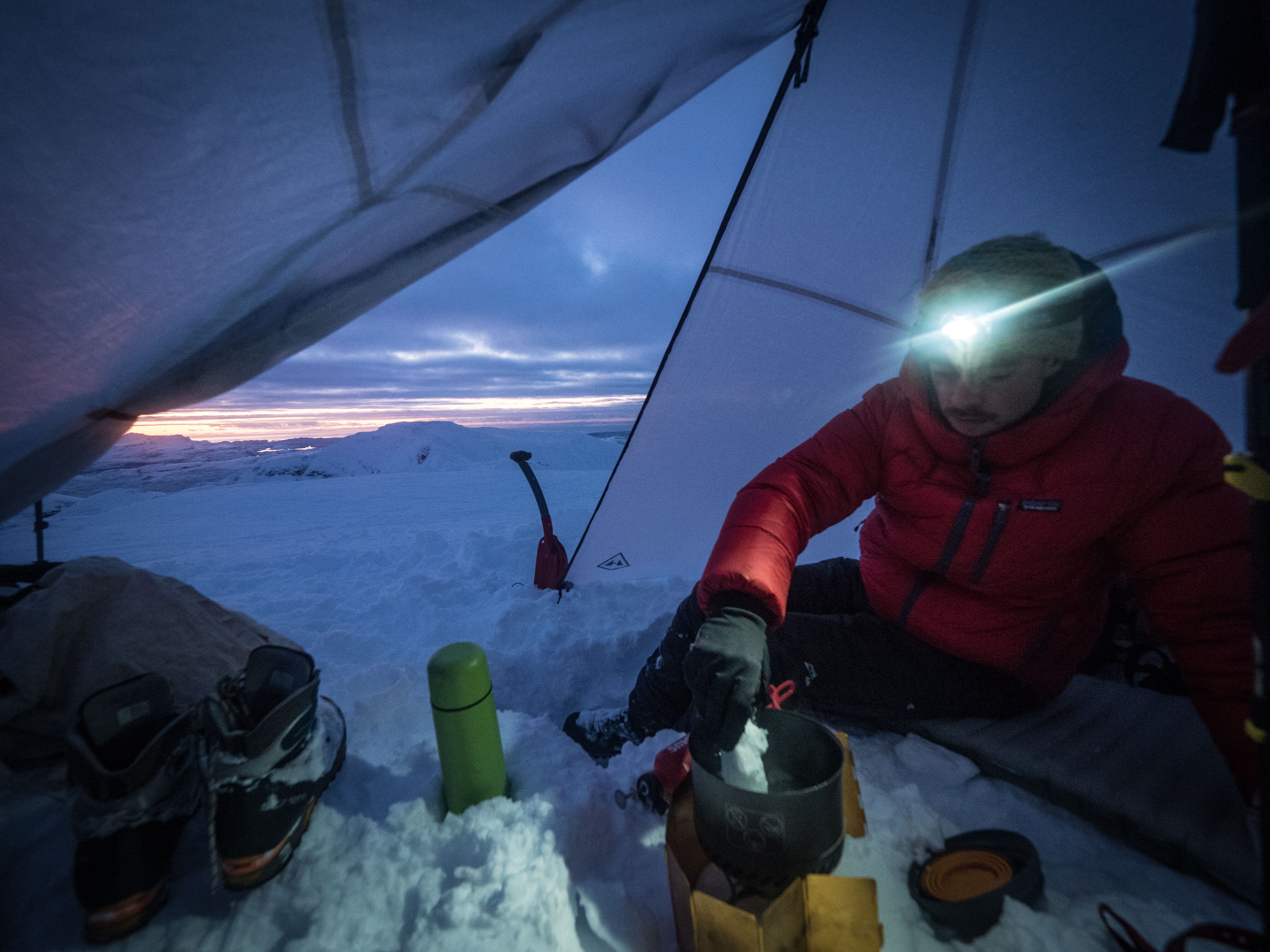
Keeping Cosy
Keeping Cosy
That leads us to the big one: how do you stay warm when winter camping?
In our dry-bags, there are three different things we use to keep warm: a ‘tent suit’ of insulated jacket and trousers, a sleeping bag or quilt, and a sleeping mat. Each one of those changes from summer to winter, since all three work together to keep us warm.
Your ‘tent suit’ is pretty straightforward. A warm jacket to keep you warm while stationary should be on anyone’s pack list at any time of year in Scotland. Unless it’s very cold we favour synthetic insulation that can deal with getting damp if it needs to be used in the daytime. What a lot of folks forget is that your legs contain some big muscles with large supplies of warm blood. Insulated trousers are light, pack small and make a huge difference to warmth and comfort in camp. In terms of bang for your buck, they’re probably the best single item that most people could add to their pack list. Mountain Equipment make some great ones call Compressor pants that are very warm, but Montane, Patagonia, Arcterycx and Rab all make a synthetic-insulated pant. I also carry a pair of Primaloft socks any time I’m worried about being warm, since they weigh nothing but are lovely to put on after a day spent in damp socks. and shoes. Warm hats, buffs all make small but measurable differences to comfort too.
We tend to fixate on sleeping bags more than other pieces of winter gear. While it is important, the warmest bag still won’t keep you warm if your knackered, wet and hungry. Your sleeping bag needs to be warm of course, but if we’re being honest temperatures in Scotland rarely get below -5, so that arctic expedition bag is unnecessary. Hydrophobic down is a relatively new development that makes the down insulation in your bag (or jacket) more resistant to collapsing when wet, and dries out much faster afterwards. It’s well worth looking for when buying a new bag.
One other thing to remember is that temperature ratings are very subjective, so take the time to work out what you need rather than taking the manufacturer’s rating as gospel. In Scotland, in winter, a fill weight of somewhere between 400 and 600 is likely to see you right. However, that insulated clothing can also be worn in your sleeping bag to boost it so long as it isn’t too bulky and stops the insulation lofting to its full potential. This winter, I’ve been using insulated trousers, a down jacket and my tiny summer quilt with just 150g of down in it. It works for me down to -5ish, and saves a huge amount of weight from my gear. That said, it’s taken a while and some experimentation to work out what I can get away with and stay comfortable!
Finally, don’t forget your sleeping mat. Since they’re in contact with the (very conductive) ground, they affect how warm you will stay just as much as your bag. Mats are usually assigned an ‘R-value’ describing the level of insulation, with a good summer mat being somewhere around 2 – 4. The winter sleeping mats that we prefer have a R-value of 6.9, which is a geeky way of saying that they’re noticeably warmer! The downside is that they are expensive, but a much cheaper solution is to add one of those cheap, thin foam mats under your regular mat. They aren’t bulky, but will hugely boost the warmth of your sleep system when the ground is cold. Clothes, bag and mat all need to be boosted in winter, rather than relying on a bigger bag to do all the work…
We’re keen to stress that winterising your camping adventures doesn’t have to involve decking yourself out in brand new, expensive gear. The BackcountryScot consignment store is our way to trying to match great used gear to new adventure partners, so check it out and get in touch if you’re looking for something specific.

Using a ‘camp suit’ to keep warm after a day’s riding 
Winter loads can end up being a bit bulkier than summer gear… 
Careful use of a stove in the tent porch. Extra space is always welcome for faffier winter gear. 
Breakfast at -20 in Greenland. We remember it being more fun than this makes it look!
Your best piece of gear is your head
Your best piece of gear is your head
So far this has been a gear-centric piece, although we’re all for saving cash with cheaper solutions where possible. However, the cheapest thing to change in readiness for camping in winter is your mindset!
At the end of the day, we all want to come back from an adventure thinking enthusiastically about the next time we can go and do that again. Keeping fun front and centre in winter might well require letting go of some other things, like distance and difficulty. December is not the time to go and ride your longest ever day! By dialling back the difficulty you can leave a little wriggle room for unforeseen difficulties. That secret local spot can make the perfect overnight adventure to keep the adventure stoke alive in anticipation of summer days to come. Keeping your days out shorter also gives you the ability pack for comfort rather than speed: that extra warm layer, your thickest socks or a few after-dinner treats can all make things seems a lot more homely. A flask of hot chcocolate brought from home is a frequent addition to my winter pack! ‘Pack to be happy’ is a good mantra when camping in cold conditions, and if that means a heavier pack and shorter journey, well that’s just fine.
Of course, any guide written in times like these can’t escape the inevitable mention of covid… Make sure to familiarise yourself with current restrictions and guidelines — more so than normal, this winter is a time to be conservative with your plans and decisions to minimise the need for assistance. That wee local overnighter has never been a more perfect option.
Lastly, while these wee tricks and tips help to make winter camping more comfortable, they’re not the only things you need to know for a safe adventure in the hills in winter. Check out Mountaineering Scotland’s ThinkWinter guide for planning safety advice, the one and only MWIS for forecasts tailored to outdoor users.
